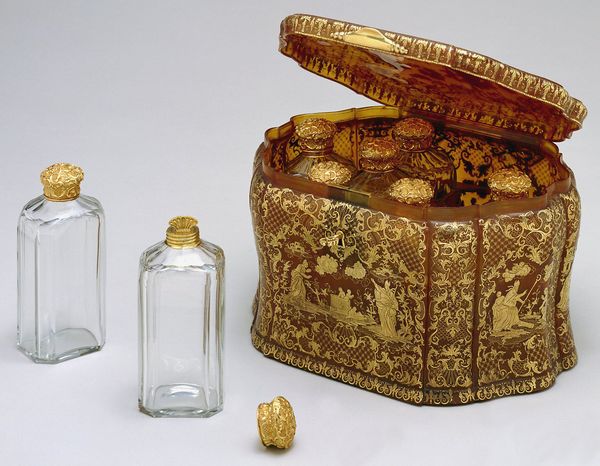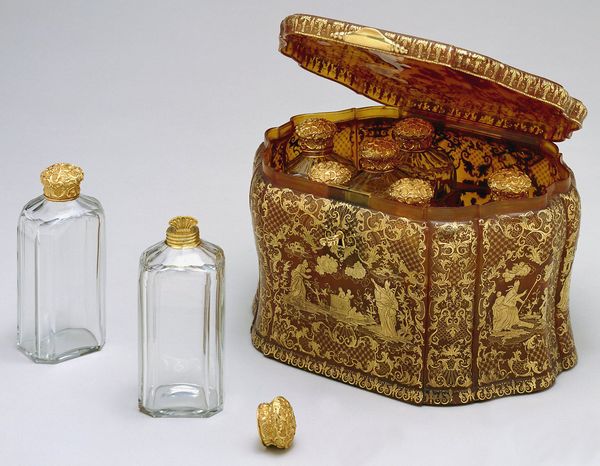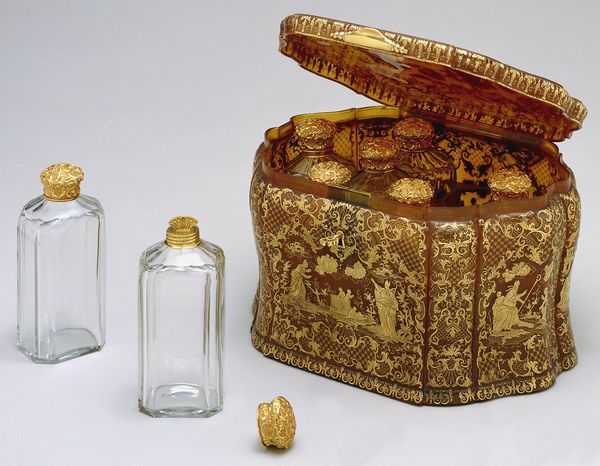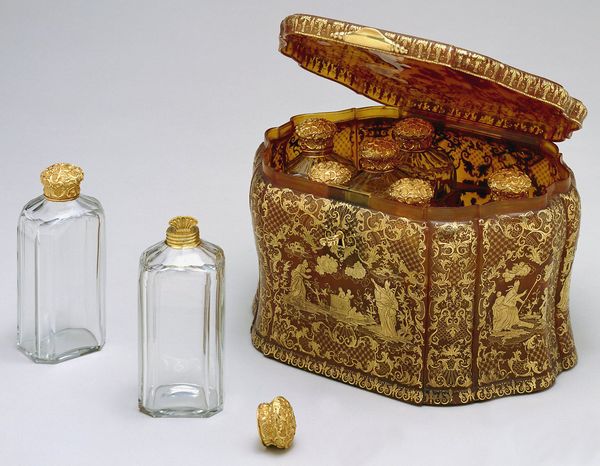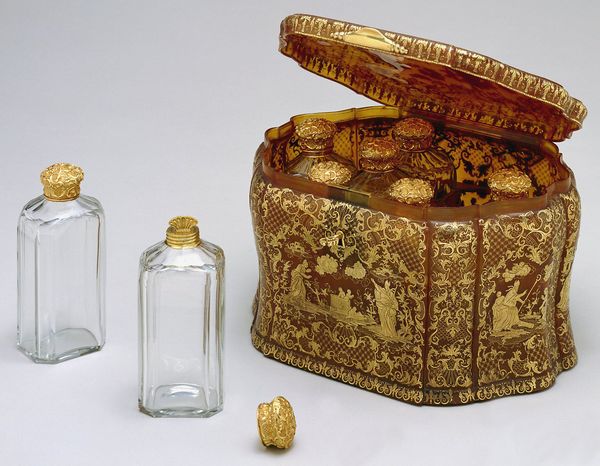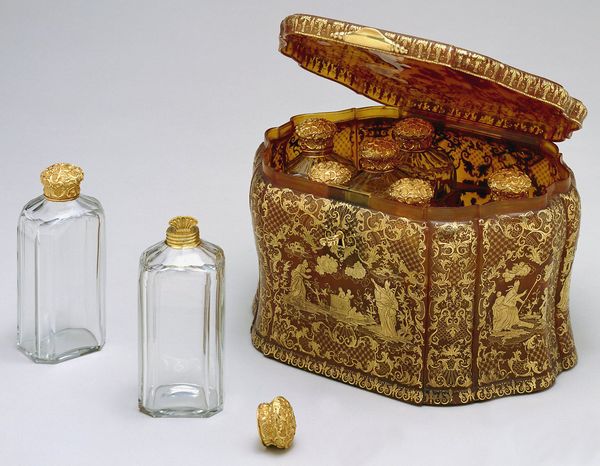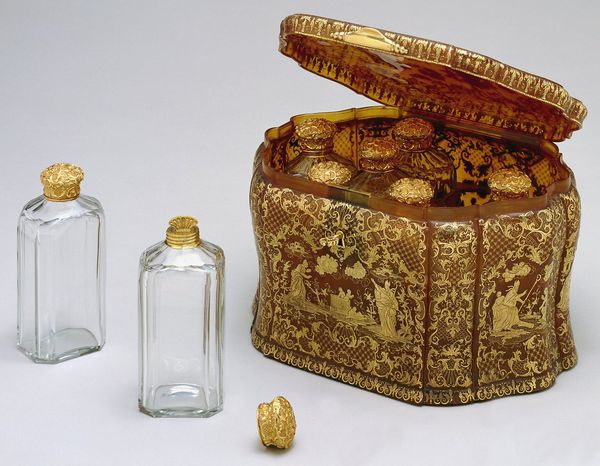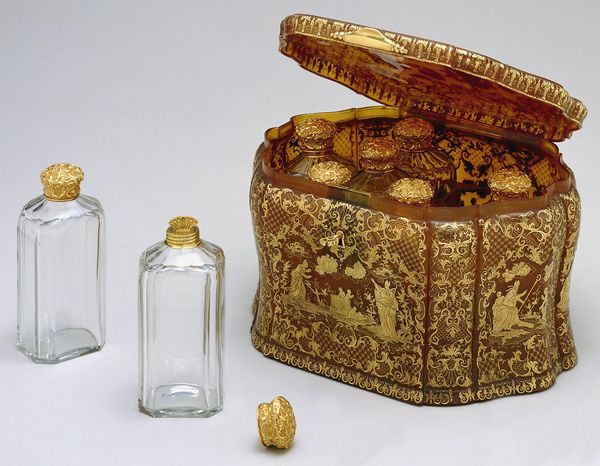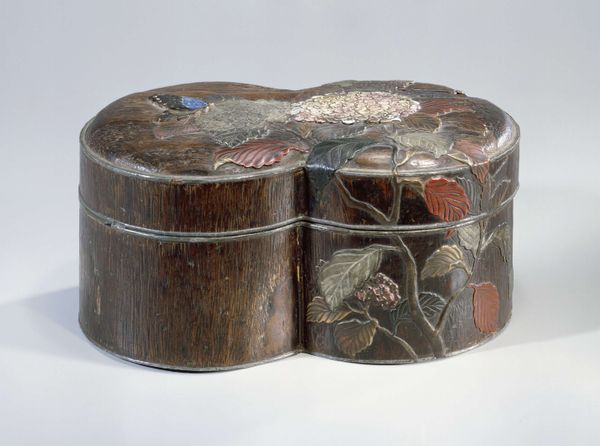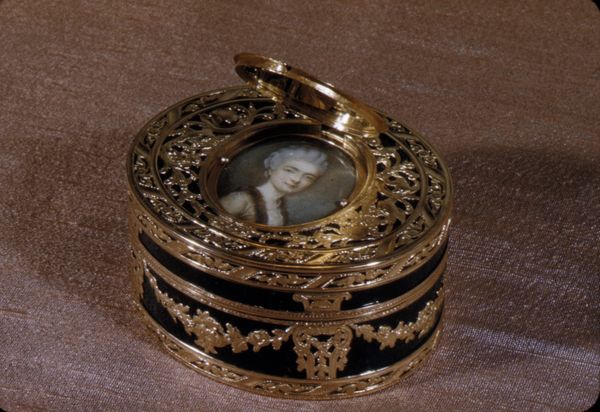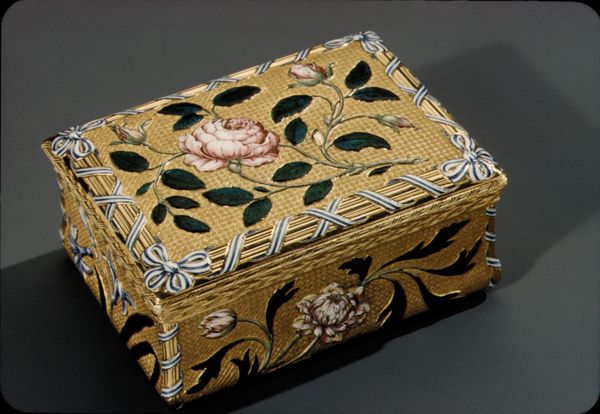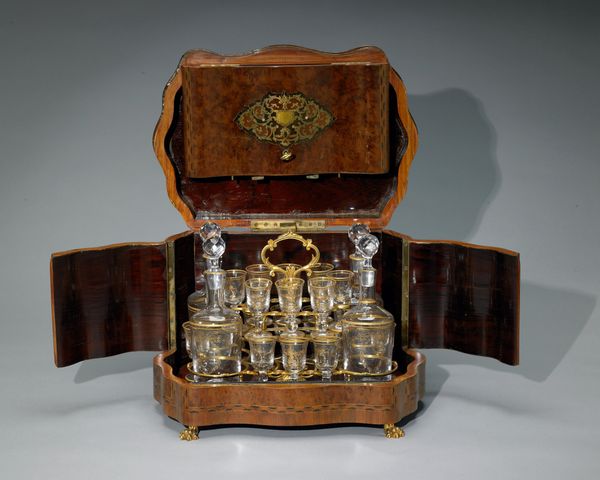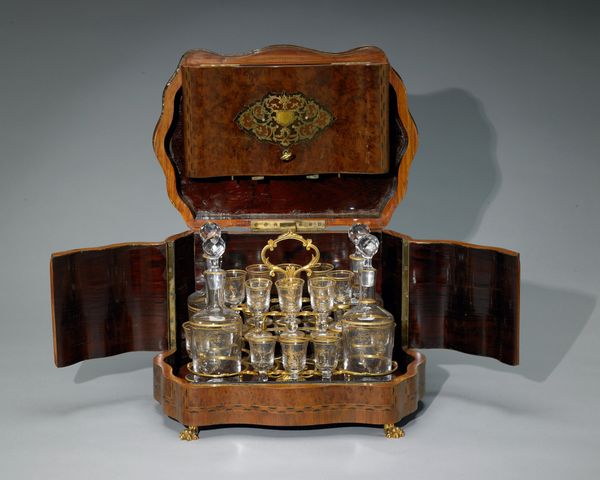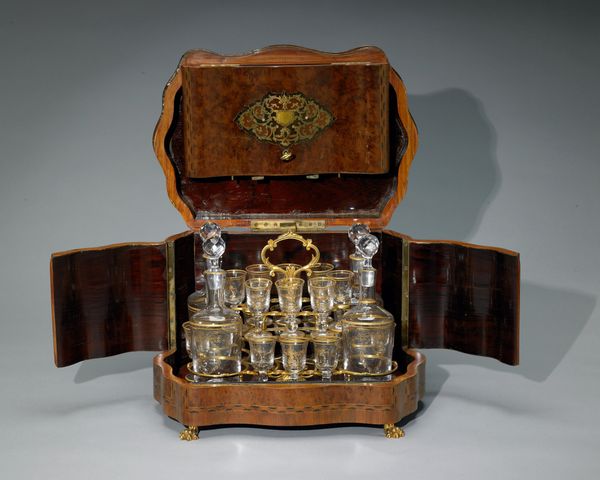
ceramic, glass
#
ceramic
#
glass
#
ceramic
#
decorative-art
#
rococo
Copyright: Public Domain
Editor: Here we have an ornate glass bottle, likely part of a set, dating from around 1745. The piece, whose maker is anonymous, is held in the collection of the Minneapolis Institute of Art. I’m struck by how the clear, simple lines of the bottle contrast with the lavish decoration on the box, it’s really eye-catching. What jumps out at you when you see this piece? Curator: The Rococo style practically shouts from this object. Beyond the decorative flourishes, I'm most interested in how an object like this reflects 18th-century social values. Who do you imagine owned something like this, and what might it have signified to them and to others? Editor: Well, considering all the gold embellishment, I'd guess it belonged to someone wealthy, maybe royalty or aristocracy. Perhaps it was a status symbol, displaying their refined tastes and access to luxury goods? Curator: Exactly. This wasn't just about holding perfume. The detailed gilding depicting what seems to be classical scenes suggests an elevated level of education and sophistication, something very important to the elite at the time. The display of wealth and cultural knowledge were intertwined with social standing. Think of the public role of this object; imagine the statement it would make when displayed. Editor: So, the imagery and material weren't just aesthetic choices; they were deliberate social statements? Curator: Precisely. This bottle tells us less about personal hygiene and more about public identity and aspiration in 18th-century society. Consider the power dynamics embedded in owning and displaying such an item. Editor: That’s a perspective I hadn’t fully considered. I was focused on the aesthetics, but now I see how it’s so much more than just a pretty object. Curator: Indeed. Art history encourages us to examine not just what we see, but the larger social, cultural, and historical forces that shaped its creation and reception. Editor: Thanks, this was insightful; I learned to consider art beyond just its beauty. Curator: My pleasure, always consider how it acts within a society.
Comments
minneapolisinstituteofart almost 2 years ago
⋮
The box is decorated with scenes from the life of St. Nicholas of Myra. This fourth century Greek bishop, who was the patron saint of children, sailors and travelers and the guardian of young women, was the forerunner of St. Nicholas or Father Christmas. The gold scenes were applied in a piqué technique whereby thin sheets of gold are impressed into tortoiseshell which has been softened in boiling water and olive oil. Once the shell cools, it contracts and the gold is securely held in place. This technique was first introduced at the end of the sixteenth century in Naples, and by the following century it had spread to France, England and northern Europe, with Paris and Naples as the principal centers. The costly and time-consuming nature of this intricate technique imply that it was used on only the most expensive small luxury items such as inkstands, trays, snuffboxes and boxes for toilet articles, in this case gold-mounted perfume bottles.
Join the conversation
Join millions of artists and users on Artera today and experience the ultimate creative platform.
